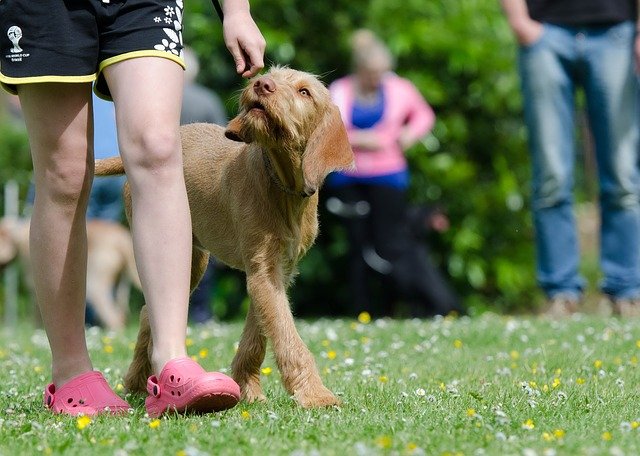
How do you train a dog with behavior problems?
Dogs are often considered a part of the family, and when they misbehave, it can be very frustrating.
It’s essential to teach them good behaviour so that you don’t have to deal with all of these problems!
This blog post will talk about dog training and offer solutions for typical dog terrible behaviours like barking, chewing, digging, separation anxiety, inappropriate elimination, and more.
Table of Contents
- How do you train a dog with behavior problems?
- What is dog training behavior?
- What is normal dog behavior?
- What are abnormal Behaviours in dogs?
- What to do when your dog has bad behaviour?
- How can you tell if your dog has behavior problems? Causes and Solutions When Your dog Misbehaves
- How much does dog behavior training cost?
- How do I tell my dog I love him?
- What is the best dog training course?
What is dog training behavior?
Dog training is the process by which dogs are taught specific behaviours.
This can include anything from teaching them simple commands like “sit” and “stay” to more complex tasks such as obedience trials or agility competitions.
Dogs learn these behaviours through positive reinforcement: rewarding good actions with praise (or treats) while ignoring bad ones.
Dogs will also respond better when people use their name in conjunction with a command; it helps reinforce who’s in charge!
When attempting to train your pup on any new behaviour, always remember patience and consistency- you don’t want to make mistakes because frustration leads to poor performance.
If something isn’t working out for you one day, try.
Training your dog may not be easy, but it’s worth the effort.
You must keep in mind that dogs can’t learn if they don’t want to listen or are under stress.
You need to set boundaries and enforce them consistently to know what is expected of him right from the start! If you have more than one pet at home, make sure each has his area where he stays when left alone for long periods.
This will help reduce anxiety which often leads to lousy pet behaviour like barking and chewing furniture. When training a new pet, never hit or scold yelling, leading to aggression later on down the road.
What is normal dog behavior?
The dog usually behaves when they are well-exercised, have plenty of time to play and explore.
Exercise is an essential part of a dog’s life because it helps keep his weight down while also providing mental stimulation.
What are abnormal Behaviours in dogs?
There are ten types of abnormal behaviours: Barking, Chewing, Digging, Separation Anxiety, Inappropriate Elimination, and Begging.
What to do when your dog has bad behaviour?
There are many different reasons why a dog misbehaves.
The first step is to try and figure out the reason behind their behaviour by asking yourself questions such as “Is my pet bored?” or “Can I give them more attention?”.
From there, you can find solutions tailored to your specific problem.
How can you tell if your dog has behavior problems? Causes and Solutions When Your dog Misbehaves
If you’re a dog owner like me, your pet is both the love of your life and your best friend.
It’s hard to imagine what life would be without them! But sometimes it can be tricky too- especially when they have behaviour problems.
Some behaviours that might be signs of a problem include aggression towards people or other animals, anxiety from separation or even thunderstorms, fearfulness around particular objects such as vacuum cleaners or garbage cans, excessive barking at nothing in particular.
(or “noisy” barking), growling when approached by another animal or person while eating food. And more!
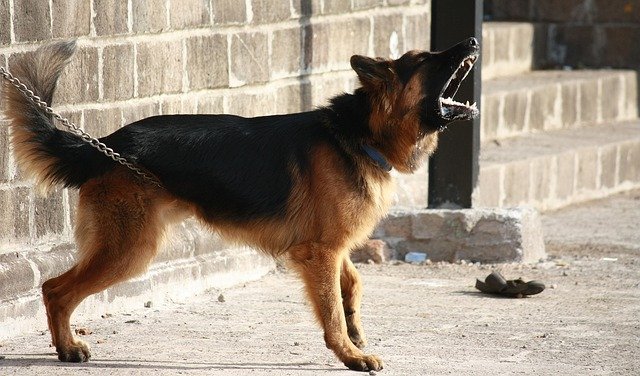
1. Barking.
Dog barking is one of the most common dog behaviour problems.
There are many reasons why a dog might bark, such as because they’re bored or scared of something outside the house, but it can also be out of anxiety and insecurity.
If your pet is barking aggressively at any object that moves near their territory, try to figure out what’s causing them stress and make sure they feel comfortable in their environment by making changes like getting rid of distractions (like TV) when you leave the room, so there isn’t anything else new happening while you’re gone
When dogs become anxious around other people, take time to familiarise them with whoever comes into your home and don’t allow unfamiliar visitors without warning first.
They will eventually learn not to react badly towards
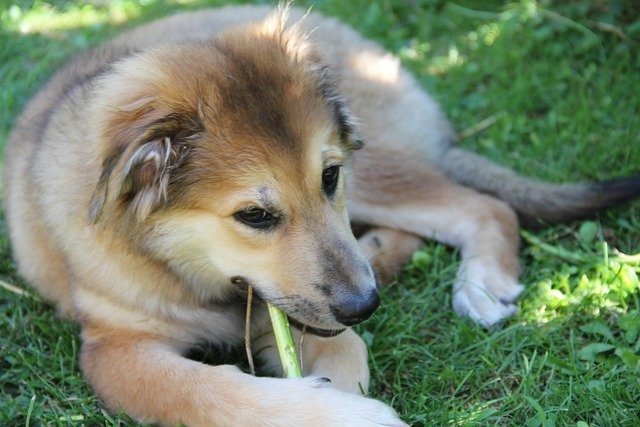
2. Chewing.
Dog chewing is another problem the dog owner has to tackle.
A common complaint among young children who have puppies at home is that their couch becomes the chew toy for their puppy!
This can be frustrating because most parents want to teach good habits from day one, but they’re often too exhausted to put up gates 24/hours a day (especially during nap time) which will prevent your
Behaviour training for dogs is a great way to teach your dog what you want them to do instead of doing unwanted or destructive behaviours like chewing, running away when they’re outside, jumping on people and many more.
One of the most popular ways of behaviour training is through positive reinforcement, which means giving treats or praise for the dog’s behaviour to be reinforced with something good.
It doesn’t matter whether it’s an object (like food) or not because there will always come a time where we have no access to something our pet loves, and this type of reward can help us get by those hard times until we find their favourite snack again! There are also other types of rewards

3 Digging.
Digging is one of the few behaviours that most dogs feel a natural compulsion to engage in.
To stop this behaviour, it’s essential to understand the distinction between digging as annoying and digging as therapy.
Some dogs like to dig for fun and will need their special place where they can do that; other dogs may be using a hole in the ground (or even an old box) as a way of relieving anxiety or stress.
The problem is that your dog digs up all your plants
The solution would be to provide another outlet for them when you aren’t home, such as giving them chew toys or going outside more often before bedtime.
Filling holes with wire mesh helps too!
Lastly, if they’re looking anxious while chewing on things, try adding some calming herbs into what you feed them.
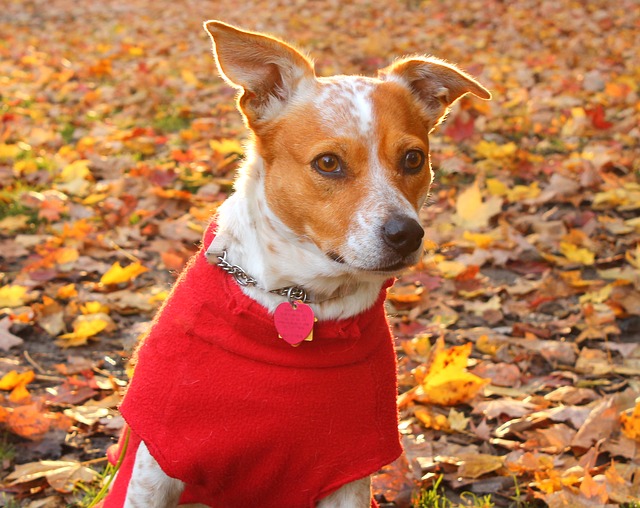
4. Separation Anxiety.
Separation anxiety is one of the most commonly discussed dog behaviour problems.
It can be defined as a dog getting anxious when its owner leaves and becomes destructive, vocal or otherwise disruptive in response.
The problem is that your dog destroys things when you leave the house
Dogs with separation anxiety typically get extremely stressed out by any changes to their routine.
This includes not hearing their owners walk through the door from work, being left alone for too long without sufficient exercise or mental stimulation, etc.
To fix this, it’s important to go back to basics: establish a consistent daily schedule where they’re walked at least once around noon; provide them plenty of toys (or take away some); encourage playtime before bed; don’t change what time they eat dinner after all other day-to-day activities.

5. Inappropriate Elimination.
One widespread problem in dogs is inappropriate urination and defecation.
To combat this, it’s essential to provide your dog with a set schedule for going outside and sufficient exercise indoors.
The most commonly seen in dogs is barking, which can be problematic if done excessively or when the owner isn’t home.
Barking may also occur due to separation anxiety or boredom, so correcting these problems could also help.
Sound correction collars deliver harmless but annoying noise

6. Begging.
Many dog owners encourage this behaviour and find themselves undercutting the foundation of training with their canines.
Dogs beg because they want or need something, and a dog may get confused if the owner is giving in, which can lead to more begging. Instead of rewarding your pup with food, give him tummy rubs or playtime when he begs at mealtimes
This way, you’re teaching them different behaviour and strengthening their bond with you as well.

7. Chasing.
A dog’s desire to chase moving objects is due to predatory instinct, not a lack of training.
The canine desire for chase drove nomadic wolves from one animal carcass to the next and eventually became an inbred behaviour over time.
It’s not so much a problem as it is instinctive behaviour that has to be managed.
To help curb this, you should never let your dog off-leash in public – even if the area appears safe and there are no other dogs around.
Build positive associations with strangers by having them give treats or petting your pup when he displays calm behaviour toward people in his environment.

8. Jumping Up.
Jumping up is a natural behaviour for dogs. Dogs jump on humans to assert dominance, playfully, and for attention.
However, this human-directed behaviour can be a problem in certain situations.
For example: at home with young kids or at the vet’s office where it could injure the dog or people around them.
When greeting guests who don’t want their clothing stained by an overzealous canine, when trying to give commands from your seated position.
The key is understanding why jumping up happens so you can remedy it accordingly – try squirting water bottles that make noise near your pup while he jumps up (to break his focus), keep him leashed if there are other dogs around who may take advantage of his proclivity toward higher ground, redirect him with toys

9. Biting.
Dogs bite and nip due to a variety of reasons that are hard-wired into them.
A dog may bite when playing too roughly or in a game of tug-of-war to show dominance and superiority over other animals (including humans) during fights
or even because he’s currently frustrated with his situation. It can also be an expression of love if the biting occurs on your face, arms, hands, or feet not to cause pain.
For this reason, you must understand why they are doing it before attempting to stop them altogether.
For example, by yelling at him while biting your arm: you’re hurting him instead of teaching him what behaviour is appropriate.
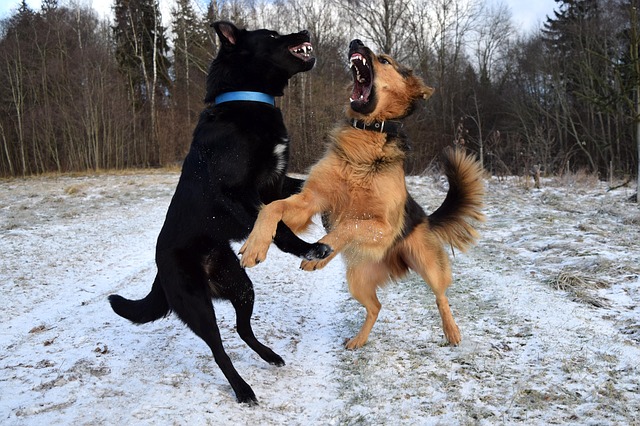
10. Aggression.
Dog aggression is exhibited by growling, snarling, showing teeth, lunging, and biting.
Dogs can be aggressive during play, in defence of their territory or resources (such as food), guarding a person they feel is threatened, and sometimes out of fear.
Dog aggression may also occur from the dog’s environment – such as being afraid to come off the couch because he was bitten with slaps on his chest by a family member for jumping up before it could happen when an owner punishes them too harshly over something minor like barking at passers-by outside while sitting inside.
Or if other dogs are fighting nearby that pose no threat to him but make him nervous. Solutions:
If you find your dog growling, snarling, showing teeth etc., act calmly and assertively towards them without any sudden
How much does dog behavior training cost?
The biggest drawback of do-it-yourself dog training is the potential lost time, leading to further behavioural issues. If you are a dog owner, your time is valuable.
Time spent training or working with your pet can’t be used for other pursuits.
You’ll need to consult an expert about the cost of dog behaviour consulting and training programs before undertaking any program yourself.
On average, professional dog trainers charge $45-$100 per hour in small cities where prices may reach up to $250/hour for more specialised services like animal law enforcement instruction or criminal profiling dogs.
A typical four-week course might run from $300-$500 at a local university’s extensions school (though some schools offer discounts if you enrol during their promotions).
Programs that last longer than six weeks will start adding costs every week they’re running; this also includes programs that target specific.
How do I tell my dog I love him?
Dogs like to be loved and considered a member of the family.
Listed below are ten types of destructive behaviours that dogs may exhibit and some possible causes for why they are behaving this way so you can begin to work on training them to behave differently in the future.
Dogs rely on facial expressions and body language to communicate with one another. If they’re doing something enjoyable, such as playing nicely with a toy, this action will make them happy.
You can mimic a dog’s expressions by smiling, wagging your tail and sticking out your tongue.
First, you need to set rules on what behaviour is acceptable.
Once those rules are established, provide rewards for good behaviour and punish bad behaviour by removing something they enjoy doing or providing an unpleasant experience such as a spray from a water bottle.
The time it will take before any change in the dog’s behaviour depends solely upon how quickly you make changes and apply them consistently.
For example, if you stop giving him food every day when he begs at the table but continue feeding him twice per week, his begging will not decrease until after six weeks because that is how long it takes for each missed meal to have its full effect on a dog.
What is the best dog training course?
Learn new dog training tips from dogwhispers.co.uk free book
The course can be found at dogwhispers.co.uk. It is a step-by-step guide that will teach you how to train your dog in the best way possible, no matter their age or breed type.
This means it does not matter if your new puppy needs house training or has an irritating habit such as barking too much – this course covers all of these types of problems with easy instructions on how to address them quickly and easily without any stress!
